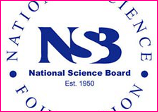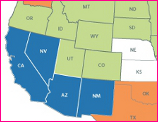Posted on August 14th, 2011 by Jaimie Schock
 Prowess in math may be apparent in children as young as three, according to a new study by Johns Hopkins University researchers that may help point the way to improved learning. Children display a “number sense” even before formal mathematical education takes place, the study published in the journal of Developmental Science suggests.
Prowess in math may be apparent in children as young as three, according to a new study by Johns Hopkins University researchers that may help point the way to improved learning. Children display a “number sense” even before formal mathematical education takes place, the study published in the journal of Developmental Science suggests.
Read More
Filed under: K-12 Education News | Comments Off on Tykes Reveal Math Talent
Tags: Elementary Education, Math, Mathematics, Research, Research on Learning
Posted on July 6th, 2011 by Jaimie Schock
 Science and Engineering Indicators, from the National Science Board, provides a broad base of quantitative information on the U.S. and international science and engineering enterprise. Its Education Timeline provides statistics and data for every step of the education process that are helpful for students, faculty, parents, and more.
Science and Engineering Indicators, from the National Science Board, provides a broad base of quantitative information on the U.S. and international science and engineering enterprise. Its Education Timeline provides statistics and data for every step of the education process that are helpful for students, faculty, parents, and more.
Read More
Filed under: Web Resources | Comments Off on Science & Eng. Education Data Timeline
Tags: Engineering Publications, Internet Resources, National Science Foundation, Publication, Research, Research on Learning, Teaching Aids, Web Resources
Posted on April 10th, 2011 by Mary Lord
 For more than 40 years, Earth Day — April 22 — has been inspiring individuals and communities to protect the planet. For 2011, Earth Day Network, the world’s largest environmental advocacy group, hopes to mobilize 1 billion “Acts of Green.”
For more than 40 years, Earth Day — April 22 — has been inspiring individuals and communities to protect the planet. For 2011, Earth Day Network, the world’s largest environmental advocacy group, hopes to mobilize 1 billion “Acts of Green.”
Read More
Filed under: Special Features, Web Resources | Comments Off on Earth Day 2011
Tags: Class Activities, Education Policy, Environmental Engineering, Environmental science, Events, Internet Resources, Research, Resources for Teachers, Teacher Resources, Web Resources
Posted on March 20th, 2011 by Mary Lord
 As anxious students hover by computer screens or mailboxes for news of college admissions, they face even more disappointment than even the record-breaking class of 2009. Though the number of high school seniors fell in many states last year, they continue to apply to more schools. The average now tops 4.5, with a hefty percentage applying to eight or more colleges.
As anxious students hover by computer screens or mailboxes for news of college admissions, they face even more disappointment than even the record-breaking class of 2009. Though the number of high school seniors fell in many states last year, they continue to apply to more schools. The average now tops 4.5, with a hefty percentage applying to eight or more colleges.
Read More
Filed under: K-12 Education News | Comments Off on Rise in College Applications Fuels Uncertainty
Tags: College, Education Policy, Higher Education, Public Policy, Research
Posted on February 20th, 2011 by Mary Lord
 Cash-strapped school districts got some welcome news from Washington last week. The Obama administration’s proposed 2012 education budget, if approved, would significantly increase federal spending for public schools and maintain the maximum Pell grant — the cornerstone financial-aid program — at $5,550 per college student.
Cash-strapped school districts got some welcome news from Washington last week. The Obama administration’s proposed 2012 education budget, if approved, would significantly increase federal spending for public schools and maintain the maximum Pell grant — the cornerstone financial-aid program — at $5,550 per college student.
Read More
Filed under: K-12 Education News | Comments Off on Obama’s Budget Boosts Money for Schools
Tags: Education Policy, Public Policy, Research
Posted on February 20th, 2011 by Jaimie Schock
 More and more consumer products are being developed using super-small particles, but is it safe? This article examines the steps scientists are taking to try and find an answer, including research being done that has already shown some startling and complicated results.
More and more consumer products are being developed using super-small particles, but is it safe? This article examines the steps scientists are taking to try and find an answer, including research being done that has already shown some startling and complicated results.
Read More
Filed under: Special Features | Comments Off on Feature: Peril in Small Places
Tags: Manufacturing Engineering, Nanotechnology, Research
Posted on February 13th, 2011 by Mary Lord
 Informal, out-of-school science and math programs offer great ways to engage girls in the subjects, but they need to be carefully planned and executed to make sure reluctant students want to sign up for and stick with them, Education Week’s Beyond School blog reports on findings from a new Harvard Family Research Project report.
Informal, out-of-school science and math programs offer great ways to engage girls in the subjects, but they need to be carefully planned and executed to make sure reluctant students want to sign up for and stick with them, Education Week’s Beyond School blog reports on findings from a new Harvard Family Research Project report.
Read More
Filed under: K-12 Education News | Comments Off on Informal Science Programs Can Benefit Girls
Tags: Girl Scouts, Girls Education, Programs for Girls, Research, Research on Learning
Posted on February 6th, 2011 by Jaimie Schock
 Within five years, every K-12 student in America will be using a mobile handheld device as a part of learning, according to Elliot Soloway, a professor at the University of Michigan. “Smart phones are the one technology that can eliminate the digital divide.”
Within five years, every K-12 student in America will be using a mobile handheld device as a part of learning, according to Elliot Soloway, a professor at the University of Michigan. “Smart phones are the one technology that can eliminate the digital divide.”
Read More
Filed under: K-12 Education News | Comments Off on Smart Phones to Eliminate Digital Divide?
Tags: Classroom Technology, Research, Research on Learning, Technology, Technology Education, Technology for Learning
Posted on January 30th, 2011 by Jaimie Schock
 Scores released January 25 from the 2009 National Assessment of Educational Progress show that many U.S. students still struggle in science. Just 34 percent of fourth graders, 30 percent of eighth graders, and 21 percent of 12th graders are performing at or above ‘proficient’ – with just a tiny fraction displaying the advanced skills that could lead to careers in science and technology.
Scores released January 25 from the 2009 National Assessment of Educational Progress show that many U.S. students still struggle in science. Just 34 percent of fourth graders, 30 percent of eighth graders, and 21 percent of 12th graders are performing at or above ‘proficient’ – with just a tiny fraction displaying the advanced skills that could lead to careers in science and technology.
Read More
Filed under: K-12 Education News | Comments Off on Most U.S. Students Not Proficient in Science
Tags: Education Policy, Publication, Research, Research on Learning, Testing
 Prowess in math may be apparent in children as young as three, according to a new study by Johns Hopkins University researchers that may help point the way to improved learning. Children display a “number sense” even before formal mathematical education takes place, the study published in the journal of Developmental Science suggests.
Prowess in math may be apparent in children as young as three, according to a new study by Johns Hopkins University researchers that may help point the way to improved learning. Children display a “number sense” even before formal mathematical education takes place, the study published in the journal of Developmental Science suggests. 








 Science and Engineering Indicators, from the National Science Board, provides a broad base of quantitative information on the U.S. and international science and engineering enterprise. Its Education Timeline provides statistics and data for every step of the education process that are helpful for students, faculty, parents, and more.
Science and Engineering Indicators, from the National Science Board, provides a broad base of quantitative information on the U.S. and international science and engineering enterprise. Its Education Timeline provides statistics and data for every step of the education process that are helpful for students, faculty, parents, and more. For more than 40 years, Earth Day — April 22 — has been inspiring individuals and communities to protect the planet. For 2011, Earth Day Network, the world’s largest environmental advocacy group, hopes to mobilize 1 billion “Acts of Green.”
For more than 40 years, Earth Day — April 22 — has been inspiring individuals and communities to protect the planet. For 2011, Earth Day Network, the world’s largest environmental advocacy group, hopes to mobilize 1 billion “Acts of Green.” As anxious students hover by computer screens or mailboxes for news of college admissions, they face even more disappointment than even the record-breaking class of 2009. Though the number of high school seniors fell in many states last year, they continue to apply to more schools. The average now tops 4.5, with a hefty percentage applying to eight or more colleges.
As anxious students hover by computer screens or mailboxes for news of college admissions, they face even more disappointment than even the record-breaking class of 2009. Though the number of high school seniors fell in many states last year, they continue to apply to more schools. The average now tops 4.5, with a hefty percentage applying to eight or more colleges.  Cash-strapped school districts got some welcome news from Washington last week. The Obama administration’s proposed 2012 education budget, if approved, would significantly increase federal spending for public schools and maintain the maximum Pell grant — the cornerstone financial-aid program — at $5,550 per college student.
Cash-strapped school districts got some welcome news from Washington last week. The Obama administration’s proposed 2012 education budget, if approved, would significantly increase federal spending for public schools and maintain the maximum Pell grant — the cornerstone financial-aid program — at $5,550 per college student. More and more consumer products are being developed using super-small particles, but is it safe? This article examines the steps scientists are taking to try and find an answer, including research being done that has already shown some startling and complicated results.
More and more consumer products are being developed using super-small particles, but is it safe? This article examines the steps scientists are taking to try and find an answer, including research being done that has already shown some startling and complicated results. Informal, out-of-school science and math programs offer great ways to engage girls in the subjects, but they need to be carefully planned and executed to make sure reluctant students want to sign up for and stick with them, Education Week’s Beyond School blog reports on findings from a new Harvard Family Research Project report.
Informal, out-of-school science and math programs offer great ways to engage girls in the subjects, but they need to be carefully planned and executed to make sure reluctant students want to sign up for and stick with them, Education Week’s Beyond School blog reports on findings from a new Harvard Family Research Project report. Within five years, every K-12 student in America will be using a mobile handheld device as a part of learning, according to Elliot Soloway, a professor at the University of Michigan. “Smart phones are the one technology that can eliminate the digital divide.”
Within five years, every K-12 student in America will be using a mobile handheld device as a part of learning, according to Elliot Soloway, a professor at the University of Michigan. “Smart phones are the one technology that can eliminate the digital divide.” Scores released January 25 from the 2009 National Assessment of Educational Progress show that many U.S. students still struggle in science. Just 34 percent of fourth graders, 30 percent of eighth graders, and 21 percent of 12th graders are performing at or above ‘proficient’ – with just a tiny fraction displaying the advanced skills that could lead to careers in science and technology.
Scores released January 25 from the 2009 National Assessment of Educational Progress show that many U.S. students still struggle in science. Just 34 percent of fourth graders, 30 percent of eighth graders, and 21 percent of 12th graders are performing at or above ‘proficient’ – with just a tiny fraction displaying the advanced skills that could lead to careers in science and technology.